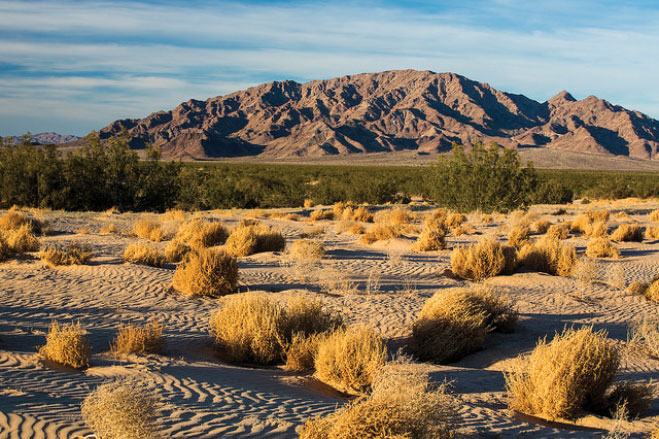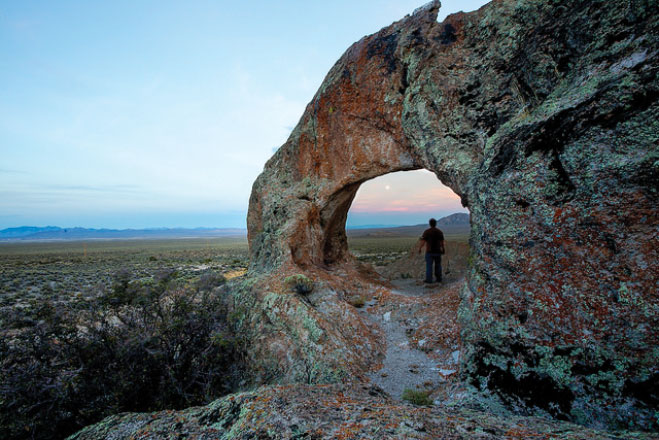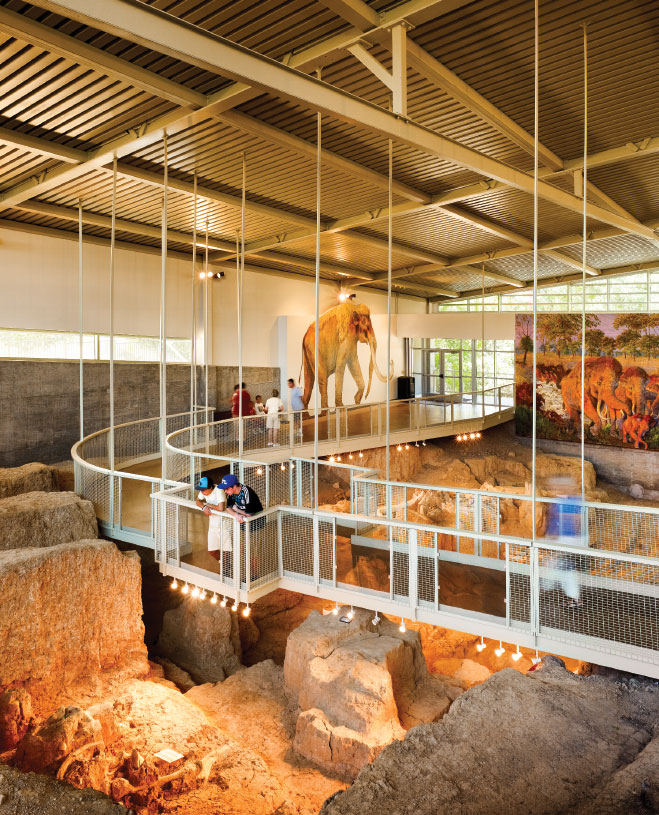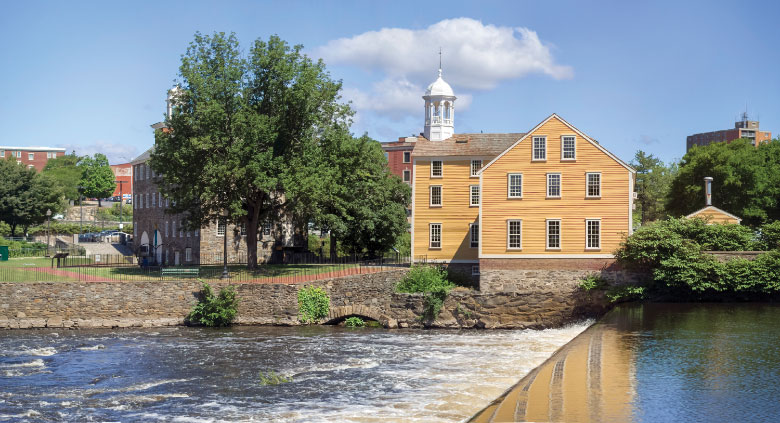Tag along as we celebrate the centennial of the National Park Service and its commitment to safeguarding America’s treasures
On August 25 in 1916, President Woodrow Wilson signed the National Park Service Organic Act with a mission to administer, preserve and protect the country’s then-fledgling network of 14 national parks and 21 national monuments. Following a century of progress, the NPS today oversees national parks, monuments, battlefields, military parks, historical parks, seashores, lakeshores, recreation areas, scenic rivers and trails in every state, the District of Columbia, the U.S. Virgin Islands, Puerto Rico, Guam and American Samoa.
Park visitation topped 300 million for the first time last year, and visitors contributed more than $30 billion to the U.S. economy. Operating on an annual budget of a little more than $3 billion (roughly the cost of four B-2 Spirit Stealth Bombers), the NPS rates a big thumbs-up from citizens. Sixty-eight percent of those polled say they’re satisfied with the government’s management of national parks. Surveys also show that the parks get a 95 percent overall approval rating from visitors.
“The public looks upon national parks almost as a metaphor for America itself,” says Loran G. Fraser, chief of the NPS Office of Policy.
America gained its 59th and newest national park, Pinnacles, in 2013 when President Obama signed legislation redesignating the then-national monument a full-fledged national park. The 26,606-acre preserve on California’s central coast near Hollister is home to the endangered California condor, the largest North American land bird. With its massive volcanic monoliths and spires, Pinnacles is a favorite spot for hikers and rock climbers.
Although Congress must approve new national parks, the president has executive authority to designate other units, such as national monuments, memorials and historical parks, without congressional approval. Obama has been busy doing just that, aiming perhaps to cement his legacy as an environmentally friendly president. Conservationists have cheered Obama’s unprecedented protection of public lands and waters, more than any other president, but the big winners are park visitors who gain improved access and interpretation at sites across the country that celebrate brilliant scenery or commemorate history and heroic figures.
Since 2014, the following national monuments and historical parks have joined the NPS roster:
CALIFORNIA
Berryessa Snow Mountain National Monument
Located near Sacramento and the San Francisco Bay Area, this sprawling 330,780-acre monument features a remarkable diversity of ecosystems ranging from chaparral-studded lowlands to mountainous wilderness areas. The site provides habitat for threatened and endangered species such northern spotted owls, bald eagles and mountain lions, as well as waterways for Chinook salmon and steelhead. It also offers great potential for recreation, including hiking, camping, fishing and boating.
Castle Mountains National Monument
On a remote and desolate stretch of the eastern Mojave Desert near the Nevada border, this monument was established largely to protect an historic open-pit gold mine. A Canadian company had held the rights to excavate up to 10 million tons of ore from the old Castle Mountain Mine but forfeited its claim, forcing transfer of the mine area to the National Park Service. The monument, which encompasses 20,920 acres, incorporates land on three sides of the mine that were part of Mojave National Preserve.
Mojave Trails National Monument
Spanning 1.6 million acres in Southern California, Mojave Trails is a stunning mosaic of ancient lava flows, jagged mountain ranges and spectacular sand dunes. The arid landscape reveals remnants of a fascinating history dating back to ancient American Indian settlements and was the training grounds used by General George Patton to prepare his troops for battle in North Africa. Crossed by historic trading routes, trails followed by Spanish explorers, a transcontinental rail line and the nation’s most famous cross-country highway, Route 66, Mojave Trails tells the story of American exploration, migration and commerce.
Sand to Snow National Monument
This appropriately named Southern California monument, 45 miles east of Riverside, covers 154,000 acres from the Sonoran Desert floor up to the sometimes-snow-covered 10,000-foot peaks in the San Gorgonio Wilderness of the San Bernardino National Forest. The monument protects a diverse ecosystem, including 12 endangered species, and serves as an important habitat linkage between the San Bernardino and San Jacinto mountain ranges. A demanding 24-mile stretch of the Pacific Crest National Scenic Trail passes through the monument.
San Gabriel Mountains National Monument
The San Gabriel Mountains form a dramatic backdrop to the Los Angeles Basin and provide Los Angeles County with 70 percent of its open space and roughly 35 percent of its water. Although somewhat protected from development since 1908 as part of the 700,176-acre Angeles National Forest, a 350,000-acre chunk of the forest was proclaimed a national monument in 2014. Monument status provides additional protection to the region, where rugged slopes and canyons are home to a number of rare and endangered species including desert bighorn sheep, mountain yellow-legged frogs and Santa Ana suckers.
COLORADO
Browns Canyon National Monument
Marked by rugged cliffs, stunning mountain vistas and iconic wildlife, including bald eagles, mountain sheep, black bear and mountain lions, this 21,586-acre site near the town of Salida is a popular area for hiking, whitewater rafting, hunting and fishing. Natural cathedral spires tower over the Arkansas River. Obama designated Browns Canyon a national monument at the request of Colorado Governor John Hickenlooper, following failure of a bill to turn the region into a national park.
CONNECTICUT
Coltsville National Historical Park
This 260-acre park is dedicated to Samuel Colt and the role played in the American Industrial Revolution by his firearms, manufactured in Hartford, Connecticut, for nearly 100 years. The park, still under development, will feature a 10,000-square-foot visitor center housed in the 1855 Colt Armory complex.
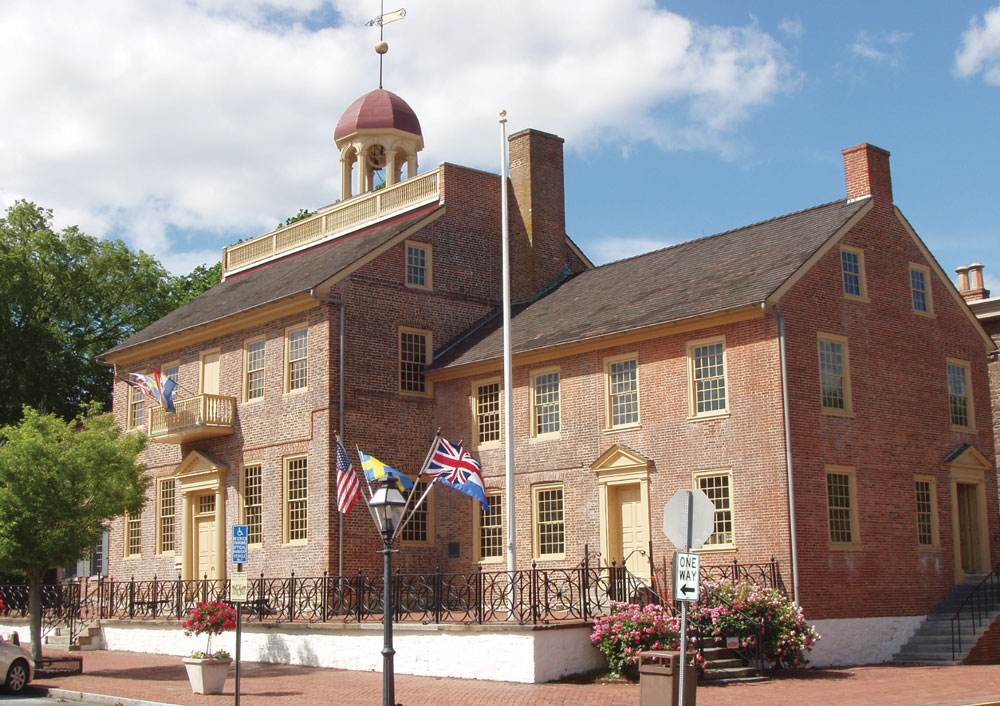
The New Castle Court House in Delaware is one of the oldest surviving courthouses in the United States.
DELAWARE
First State National Historical Park
Delaware was the first state to ratify the U.S. Constitution in 1787, and now it is the last one to get its own national park unit. Vice President Joe Biden undoubtedly rejoiced at his boss’ action to designate the three-unit park, which includes Dover Green, 1,000 acres of parkland in the Brandywine Valley and the historic New Castle Court House complex.
HAWAII
Honouliuli National Monument
Honouliuli was the largest and longest-used internment camp in Hawaii during World War II, where thousands of Japanese-Americans and some 400 resident German and Italian civilians were incarcerated during the war. The 160-acre camp was hidden away in a deep gulch that internees called Hell Valley. The monument was established to vindicate the honor of those incarcerated and recognize the historic site as a lesson in injustice.
Pacific Remote Islands Marine National Monument
This one is huge. Encompassing 490,343 square miles of the Pacific Ocean (an area three times the size of California) surrounding seven U.S.-controlled islands and atolls situated south and west of Hawaii, Pacific Remote Islands is the world’s largest marine conservation area. The Obama proclamation expanded the existing reserve by six times its original size. The monument will more fully protect one of the world’s most pristine tropical marine environments.
ILLINOIS
Pullman National Monument
Pullman Historic District on Chicago’s South Side is the first property in that city to be administered by the National Park Service. The sprawling industrial complex was founded in 1867 by the Pullman Palace Car Company as a factory town where the famous Pullman railcars were built. The monument recognizes the labor and civil rights history that unfolded there, including a long and bitter strike in 1890 that had far-reaching economic implications and ultimately led to the establishment of Labor Day.
MARYLAND
Harriet Tubman Underground Railroad National Historical Park
More than a century after her death, the most famous “conductor” on the Underground Railroad is being memorialized for her heroic efforts to help free slaves fleeing the Confederacy. Set amid the woods and waterways of Maryland’s Eastern Shore, the park can be explored along a 125-mile byway tracing a network of churches and safe houses that served as waypoints on the path to freedom.
NEVADA
Basin and Range National Monument
Spanning 704,000 acres of remote, undeveloped mountains and valleys in southeastern Nevada, this vast region was designated a federal monument for its recreational potential and long history of human habitation, evidenced by numerous Native American cultural sites.
Tule Springs Fossil Beds National Monument
Established to protect the area’s prehistoric heritage, this 22,605-acre expanse of low-lying gullies in the desert just north of Las Vegas was once home to Ice Age mammals including mammoths, lions and camels, and fossilized remains are visible everywhere. The park is open only to hikers at present, but road access and visitor services are in the works.
NEW MEXICO
Organ Mountains Desert Peaks National Monument
Known as the Organ Mountains because their needlelike peaks resemble the pipes of a church organ, the steep, angular spires that bracket the city of Las Cruces jut majestically up to 9,000 feet above the Chihuahuan Desert floor. The 497,000-acre monument comprises four sections featuring a variety of landscapes, including the aforementioned peaks, narrow canyons, open woodlands, desert and volcanic lava flows, and provides abundant opportunities for hiking, horseback riding, mountain biking, wildlife viewing, photography and camping.
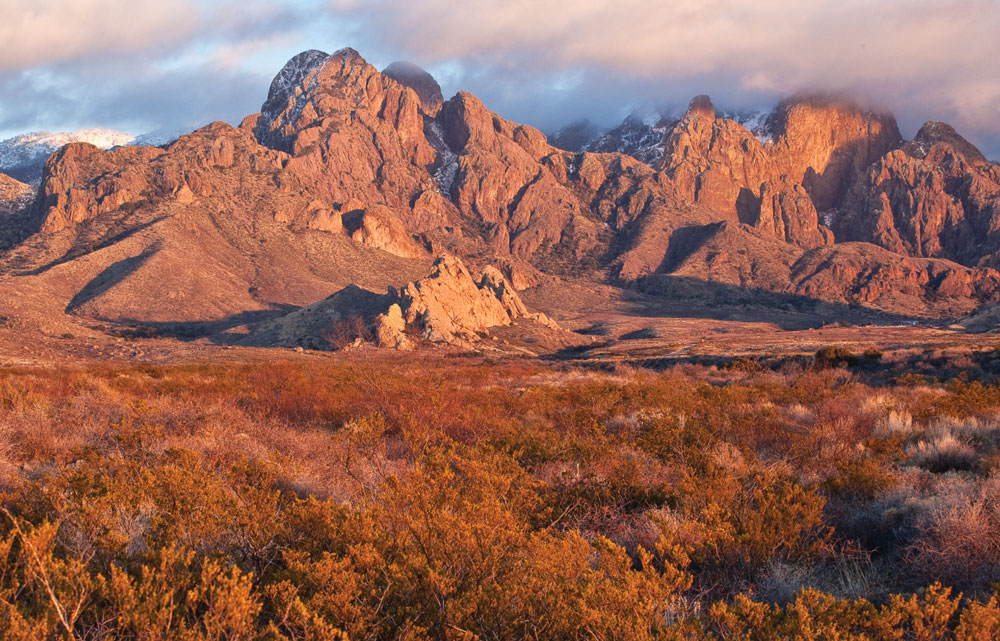
Cloaked in fall colors, the rocky spires of New Mexico’s Organ Mountains rise 9,000 feet above the Chihuahuan Desert floor.
Rio Grande del Norte National Monument
Stretching north from Taos to the Colorado border, this 242,445-acre expanse of high plains, steep canyons and volcanic cones is best known for the 800-foot-deep gorge through which the legendary Rio Grande River flows.
Valles Caldera National Preserve
The volcanic explosion that formed this 12-mile-wide caldera in New Mexico’s Jemez Mountains occurred roughly 1.2 million years ago and was 2,000 times bigger than the eruption that rocked Mount St. Helens in 1980. It’s a popular year-round recreation area, offering hiking, mountain biking and cross-country skiing.
NEW YORK
Harriet Tubman National Historical Park
In addition to Maryland’s new Harriet Tubman Underground Railroad National Historical Park, a 26-acre park is under development in Cayuga County, New York, to preserve the home of the former slave and celebrated abolitionist.
Stonewall National Monument
A gritty Greenwich Village bar where the modern gay rights movement took root, New York City’s iconic Stonewall Inn is the first national monument to highlight the history of the LGBT community. A 1969 raid during which Stonewall patrons fought back against police persecution is widely viewed as the watershed moment in the campaign for LGBT equality.
OHIO
Charles Young Buffalo Soldiers National Monument
This monument, still under development in the town of Wilberforce, preserves the home of Charles Young, a barrier-busting African American who graduated from West Point in 1889 and went on to achieve the rank of colonel in the U.S. Army. He later served as superintendent at Sequoia and Kings Canyon National Parks in California.
TEXAS
Waco Mammoth National Monument
This paleontological site represents the nation’s only recorded discovery of a nursery herd of Columbian mammoths, an extinct species unique to North America. Visitors can view female mammoths, a massive bull mammoth and a camel that lived more than 67,000 years ago, situated in their original locations and positions.
WASHINGTON
San Juan Islands National Monument
This 1,000-acre monument is made up of about 75 sites, many of them coves, reefs and small, isolated islands that were deemed in need of protection. Among the most accessible locations are those on the third largest of the San Juans, Lopez Island, including Watmough Bight and Iceberg Point.
WASHINGTON, D.C.
Belmont-Paul Women’s Equality National Monument
Just steps from the domed capitol in Washington, D.C., the historic 1820 Sewall-Belmont House that has served since 1929 as home to the National Woman’s Party is now a national monument in honor of its founder, Alice Paul. A tireless advocate for women’s equality, Paul led the fight for the 19th Amendment, granting women the right to vote, and later crafted the language for the Equal Rights Amendment.
National World War I Memorial
Memorials dedicated to veterans of World War II and the Korean and Vietnam wars have existed for years in the nation’s capital, and now at last there will be one honoring veterans of World War I. Still awaiting design approval, the memorial will occupy a space in Pershing Park on Pennsylvania Avenue. Plans call for it to be dedicated on November 11, 2018, the 100th anniversary of the end of World War I.
MASSACHUSETTS AND RHODE ISLAND
Blackstone River Valley National Historical Park
The fast-flowing 46-mile-long Black- stone River was the site in 1790 of the Slater Mill, the country’s first water-powered cotton-spinning factory, and it was the river’s important role in the American Industrial Revolution that led to its designation as a historical park. Visitors can paddle and portage the entire length of the river. Coming in 2017, a 48-mile bikeway along the corridor will allow cyclists to pedal from Worcester, Massachusetts, to Providence, Rhode Island.
NEW MEXICO, TENNESSEE AND WASHINGTON
Manhattan Project National Historical Park
Under the code name the Manhattan Project, development of atomic weapons in the 1940s at facilities in Los Alamos, Oak Ridge and Hanford in the respective states of New Mexico, Tennessee and Washington changed the world. The unique tri-state historical park recognizes this seminal scientific and technical achievement. The Department of Energy and the National Park Service co-manage the three locations, which offer walking tours of Los Alamos’ historic downtown and guided tours of the Oak Ridge and Hanford reactors.
Fun NPS Facts
Basin and Range National Monument in southeastern Nevada is home to one of the densest and best-preserved collections of petroglyphs in the country, found in the White River Narrows Archaeological District.
Local officials estimate the area surrounding Northern California’s Berryessa Snow Mountain National Monument will benefit to the tune of $26 million in extra economic activity over the next five years owing to the monument’s designation.
Nestled in a watershed that drops more steeply and rapidly than the Colorado River, the titular waterway in Massachusetts’ Blackstone River Valley National Historical Park offers kayakers and canoeists some challenging Class III rapids, especially along a stretch just north of Millville.
Remains of 19 prehistoric mammoths buried at Waco Mammoth National Monument in Texas weren’t discovered until 1978 when two arrowhead collectors stumbled across a huge bone and took it to a local museum to find out what it was.
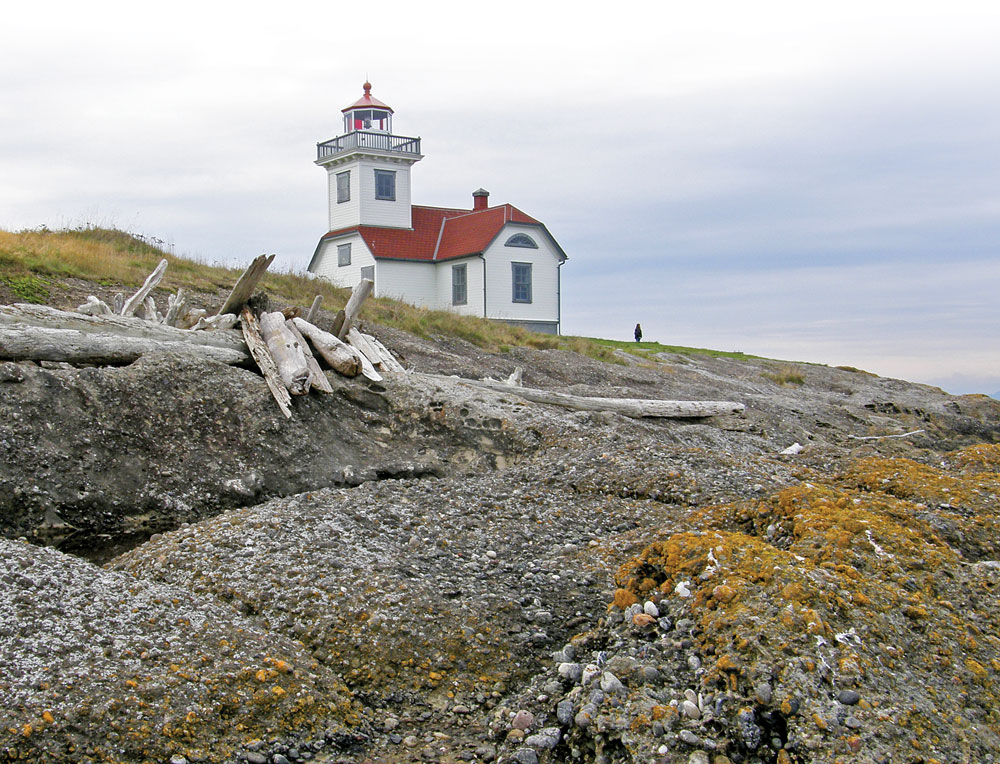
Five lighthouses are part of Washington’s San Juan Islands National Monument and have kept many ships and mariners safe throughout history.
RVs and the NPS
Since the inception of the National Park Service in 1916, camping in national parks has been a memorable way to experience some of America’s most beautiful and historic places. For those traveling in recreational vehicles, more than 130 NPS locations welcome RVers at developed campgrounds, and the larger, more visited parks offer more than one.
Generally set up in one-way loops with campsites positioned along the way, these public campgrounds have potable water and restrooms, some with coin-operated hot showers. Many NPS campgrounds have first-come, first-served campsites, but the more popular locations require advance reservations that can be made online or by calling a toll-free number.
RV-length restrictions and hookup availability vary from campsite to campsite, and pull-through sites are rare. The average permitted size is about 27 feet, with maximum length ranging from less than 20 feet to more than 40 feet, depending on the campground. The type of hookups ranges from none to the full complement of water, sewer and electrical. If you don’t enjoy boondocking, make sure the NPS campsites you reserve have a minimum of electrical hookups.
National Recreation Reservation Service
877-444-6777 | www.recreation.gov

